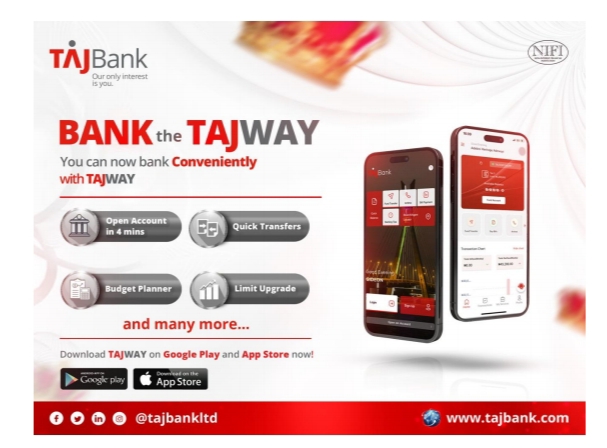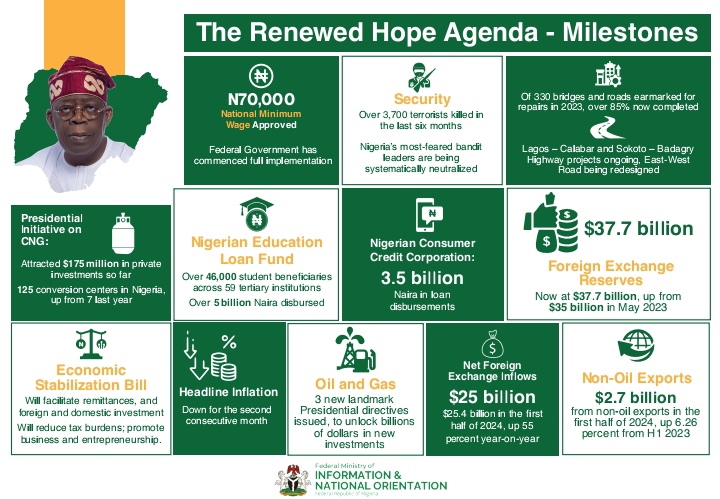By AKIN OLANIYAN
If the videos we are seeing on TikTok and other social media platforms are real, then clubbers might have had the inglorious opportunity to sample a gospel song and move their bodies on the dancing floors the same way Afrobeats and Amapiano hits would normally make them do. ‘No Turning Back II,’ a gospel anthem now providing the rhythm to twerking and vodka shots in night clubs is not just a case of the playful irreverence of random DJ’s but another page in the fat book of attention economy, where algorithms, cultural hybridity, and the hunger for engagement converge.
Given the emotions around Pentecostalism, I need to make full disclosure here: One, I do attend a Pentecostal church and have no intention of leaving. Two, until the last Sunday of May, I had never heard of Akinade Ibuoye, known as Gaise Baba or his hit song, ‘No Turning Back II,’ which featured Lawrence Oyor. As it turned out, the Teens Choir of the Redeemed Christian Church of God (RCCG) where my family worships ministered that song as part of the special programmes commemorating the 2025 Children’s Day. I liked it and as I always do with some of these songs; actually, took note to download and add it to my iTunes playlist after church. At the end of the service, I found out from one of our children – who quite unlike him, came to ask me whether I liked the ministration by the Teens Choir – that the song had been trending on TikTok, where people were already posting videos of themselves vibing to it.
The manner in which the song moved from the pew to party raises urgent questions: How does a worship song become a club banger? Who benefits from this crossover? And what does it say about the blurred lines between the sacred and the secular in Nigeria’s digital age? As I explored in my analysis of Pentecostal livestreaming, the political economy of digital worship is fraught with contradictions – where faith, technology, and commerce intersect, often at the expense of spiritual intentionality. This case of this trending song – actually a remix of an older version – is no different.
READ ALSO: Minister of Information to chair GOCOP book launch in Abuja
The treatment of Gaise Baba’s song confirms that sacred origins alone do not disable the digital afterlife. Like many Nigerian gospel tracks, ‘No Turning Back II’ may have started life as a song created for Christian worship – an artiste’s declaration of commitment to his faith and intended for ushering in people into God’s presence at solemn services. Given what we have seen since the remix was released on YouTube, its power appears to lie in its simplicity: a repetitive, emotive chorus anchored by a rhythm that’s both meditative and danceable. Yet, its transition to secular spaces isn’t entirely unexpected. The livestreams of Pastor Jerry Eze’s New Season Prophetic Prayers (NSPPD), a platform for spiritual warfare made him the highest paid YouTuber because a Pentecostal church programme satisfies the ‘performance’ threshold for global audiences.
What sets this song apart is its organic, algorithm-driven takeover. Unlike deliberate gospel-pop crossovers (think Moses Bliss and Frank Edwards hits), ‘No Turning Back II’ has taken a ride on the back of the most effective social media model to spread through unplanned remix culture. TikTok edits paired its rhythms with dance routines, skits, and – intriguingly – nightclub short videos. The song has raced to 8.1 million YouTube views in just two and a half weeks, eclipsing the ‘failure’ of the original song released almost a year prior, which has so far managed 1.3 million views. Here, the parallels to Pentecostal livestreams are stark. Seize moments of emotional peaks – whether prophetic declarations or worship choruses – to hijack attention spans. For emphasis, the algorithm, indifferent to context, rewards engagement, and this helps to explain why the remix of a song that had struggled to catch attention when it was first released is being pushed into feeds far beyond its intended audience.
I have seen videos of people criticising the song as failing their test of spirituality because it is being sampled in clubs but I would leave that judgment for church folks to deal with. My focus here is on helping people to make sense of the digital culture that has taken a gospel song from the sacred confines of churches to the sacrilege of nightclubs. Two quick things: first, I have been told by clubbers that smart DJs have long known that they needed to add popular songs into their playlist – most times sampling them for 30 seconds. Second, the criticisms by some Christian leaders seem hollow because it sounds like the church wants to be allowed to dictate what aspects of the world is allowed into the sanctuary. From the moment churches designed services to resemble music shows; they opened the door to the free movement of young folks between the altar and the nightclub.
I understand the anger of the sanctimonious church folks and can relate to the heated debates about the secular adoption of this song. For some, it’s harmless fun – a testament to the song’s infectious energy. If you paid attention, you could hear comments as, ‘even sinners need bops!’ Others, particularly church leaders, decry it as cultural sacrilege, arguing that stripping the song of its spiritual context reduces worship to background noise for hedonism. If we manage to ignore emotions, we can easily identify the clear pattern of the unforced errors that the Pentecostal church in Nigeria is committing. When worship becomes content, who dictates its boundaries? Nigerian Pentecostalism itself thrives on aesthetic spectacle – services are incomplete without fog machines and special lighting effects that mirror those at nightclubs; so, if churches can weaponise viral tactics to harvest attention and remain relevant, are they qualified to fault nightclubs for doing the same?
The song’s crossover appeal highlights the asymmetrical power dynamics of digital platforms. While the original artist may gain fleeting visibility, the real winners are platforms and DJs. YouTube and TikTok monetise the engagement; nightclubs profit from the novelty. The artist, unless they’ve negotiated sync licenses, likely sees little financial return. Plus, the Pentecostal church loses some of its deep-rooted members who question the aggressive application of modern marketing strategies to attract and keep young folks. There is nothing wrong in optimising church management but if it is too extractive; it would hurt its very objective of helping to evangelise the young folks.
Notice the danger by paying attention to the song. To go viral, it had to conform: shorten the chorus for Reels, amp the bass for clubs, mute the sermon for memes. The result? A worship as content, stripped of theology to fit the attention economy’s appetite – something that is already maxed out with the commodification of church programming and livestreaming.
The nightclub sampling of ‘No Turning Back II’ reminds us of the convergence of the sacred and secular worlds into a third, unstable space, something called cultural hybridity.
The debate echoes my earlier analysis of Pentecostal livestreaming: Can gospel content thrive online without compromising its soul? Artists face a Faustian bargain – lean into virality and risk dilution, or resist and remain obscure. Consider the rise of ‘gospel rappers’ who secularise their sound to chart, or pastors who rebrand sermons as TED Talks for clout. I really do feel for Pentecostal church leaders who have to figure out a way to catch and maintain the attention of the young folks especially Gen Z. That generation consumes culture irreverently – prayer videos as ASMR, worship songs as gym playlists. To them, the sacred or secular binary is outdated. But this raises a theological red flag: If gospel music becomes unmoored from its purpose, does it still serve as worship? I leave the question to everyone who has vibed to that song.
The viral life of ‘No Turning Back II’ is a parable for Nigeria’s digital culture: exhilarating, exploitative, and ethically fraught. The song’s swift movement from the altar to the club underscores how platforms flatten meaning into engagement metrics, rewarding those who play the game. Look closely and you would be tempted to think that the Pentecostal movement in Nigeria has mastered the art of harnessing cultural hybridity to its advantage; strategically embracing and promoting gospel artists who master the digital playbook. Take Bidemi Olaoba: his performance at the 2024 edition of The Experience Lagos highlights the Pentecostal movement’s willingness to align sacred messaging to platform logic in its effort to evangelise Gen Z. His emergence, therefore, as the de facto poster boy for Gen Z evangelism, sounds like Pentecostal pragmatism, the aim of which is to meet restless youth where they are.
But there’s hope – and a lesson from Pentecostal livestreaming. The backlash itself is a form of digital literacy. True, the convergence of faith and digital capitalism is inevitable but the question is whether we’ll let it redefine Pentecostal worship – or reclaim it. If a gospel song can soundtrack both revival and revelry, maybe the message isn’t lost – just waiting to be redeemed.
The nightclub sampling of ‘No Turning Back II’ reminds us of the convergence of the sacred and secular worlds into a third, unstable space, something called cultural hybridity. The only difference, of course, is that this is less a natural cultural evolution and more a byproduct of platform imperialism. Algorithms flatten the song’s theological intent into pure affect – a beat for clubs, a meme for Gen Z, the result isn’t organic cultural exchange, but extractive hybridity with platforms profiting from the aesthetic of Pentecostal spirituality while erasing its substance. For Pentecostal church leaders and content creators, the choice is brutal – conform to these hybridised logics or risk irrelevance.
Dr. Olaniyan is the Convener, Centre for Social Media Research, Lagos.













